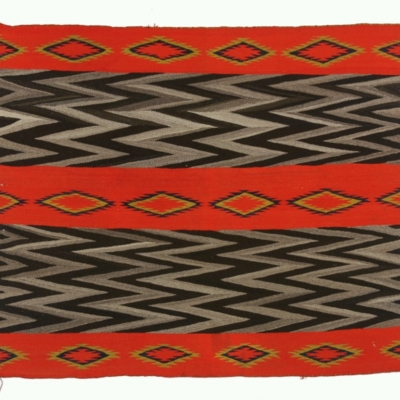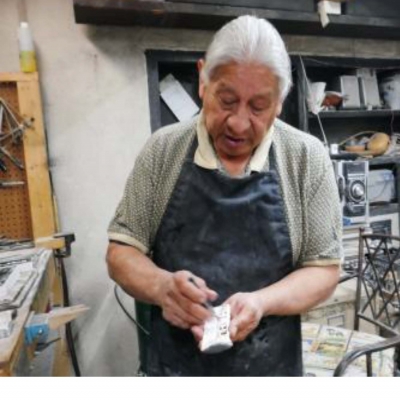Past Exhibitions
Oblique Views: Archaeology, Photography, and Time
October 25, 2015 through May 7, 2017
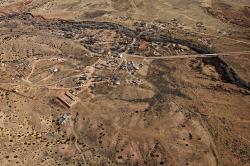
Galisteo
Galisteo is now considered statistically part of the Santa Fe metropolitan area, although it is still remote and has a population of less than three hundred people. It is home to a number of well-known artists and scholars, as well as families traditionally linked to the area, none of whom farm on the scale of the past. Galisteo Creek no longer washes away vegetation in the streambed, which now appears to be a lush forested strip. The church and cemeteries remain, as does the layout of the colonial village. Traces of the old narrow fields can still be seen. Photograph by Adriel Heisey, 2015.
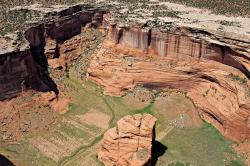
Standing Rock
Standing Rock in Canyon del Muerto. This scene is much like that in 1929, except that the stream has changed its course and the field is now planted in a more standard linear layout. The field is smaller than in 1929 because a small slump of debris from the canyon wall to the left extends farther than it used to. Perhaps in response, additional fields have been planted. Photograph by Adriel Heisey, 2008.
For the first time in Oblique Views: Archaeology, Photography, and Time, large prints of Heisey’s stunning images will be paired directly with the Lindberghs’. The exhibition opens October 25, 2015 and runs through May 7, 2017 at the Museum of Indian Arts and Culture.
During 2007 and 2008, flying at alarmingly low altitudes and slow speeds, Adriel Heisey leaned out the door of his light plane, and holding his camera with both hands, re-photographed some of the Southwest’s most significant archaeological sites that Charles Lindbergh and his new bride Anne photographed in 1929.
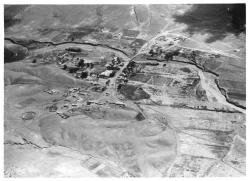
Galisteo
The village of Galisteo, south of Santa Fe, was established sometime between 1790 and 1816. Prior to the Pueblo Revolt of 1680, perhaps as many as fifteen thousand people lived in a number of very large pueblos in the Galisteo Basin. When the Spanish returned in 1692, the Pueblo Indians left basin communities and joined other pueblos, mostly along the Rio Grande. Sustained colonial use of the basin, beyond the early missions at the pueblos, started in the late 1700s with livestock grazing and the establishment of a military outpost. By 1929 Galisteo Creek was being used to irrigate farmed fields, some of which were laid out in the Spanish fashion in long narrow strips. Two fenced cemeteries can be seen to the left, and the road encircles the church in the center of the photograph—a building that was probably also the center of the village. Photograph by Charles A. and Anne Morrow Lindbergh, 1929.


